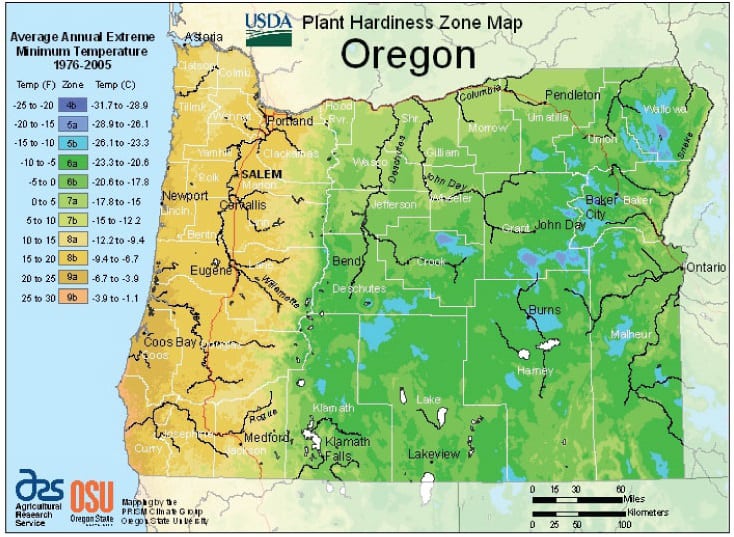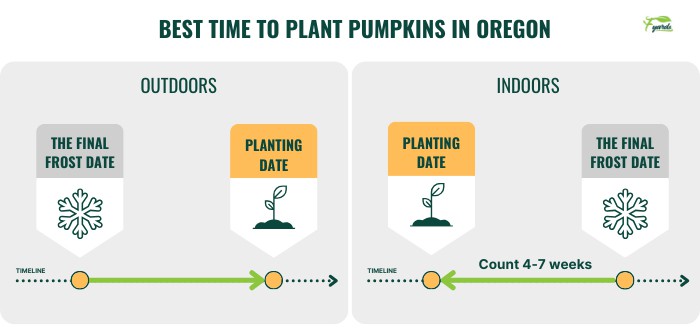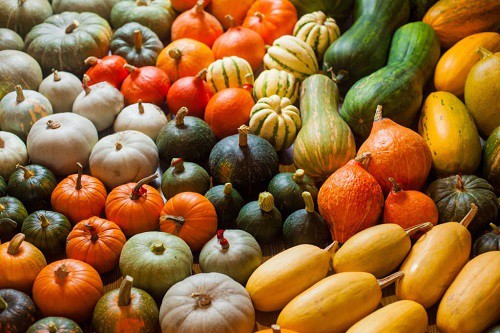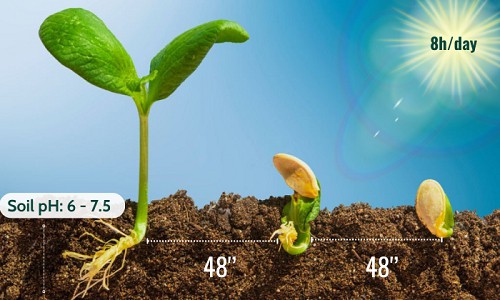Oregon’s temperate climate provides a perfect environment for cultivating pumpkins. Statistically, OR ranks in the top 15 US states for pumpkin production and has over 2000 acres of this orange winter squash in its agricultural land.
If you’re planning on growing Jack-o’-lanterns here for Halloween, sow seeds around April 15 to June to produce the best results. Note that this timeframe can change a little depending on where you live, so read on for more tips regarding when to plant pumpkins in Oregon.
Table of Contents
Best Time to Plant Pumpkins in Oregon
Pumpkins do not tolerate frost or cold soil well, which is why late spring and early summer are the best time for cultivating them in Oregon. If you grow them in winter or early spring, the plants may fail to germinate or die if temperatures plummet to 28℉ and lower.
- In practice, we recommend sowing seeds outdoors after the final frost.
- Those who want to plant earlier can grow pumpkins indoors in containers four to seven weeks before the final frost.
- The transplanting time will coincide with the direct-sowing time. Typically, this would be:
- May if you live in the coastal and western valleys of Oregon,
- June if you reside in the mountainous and plateau regions of central and eastern Oregon,
- April 15 to June for other areas of the state (like Columbia and the Snake valleys).
- Timing-wise, the soil should measure at least 55℉, with 70 to 90 degrees being the optimal range for growth throughout the season. A week of temperatures below 50 degrees Fahrenheit is enough to damage pumpkins and cause them to spoil quicker.Ideally, the air temperature should hover around 65℉ to 75℉. Also, make sure it doesn’t dip below 55℉ during the night.
- If gardening in containers, use peat pots with potting soil and expose the seeds to fourteen hours of fluorescent light per day. You should also harden the seedlings off before moving them outside.
- For those wondering, “is it too late to plant pumpkins?” they should be harvestable before the first frost. So, look up the first frost where you live and deduct your pumpkins’ time to maturity from it to get the latest planting date.
We have listed the freeze estimates for some Oregon locations below.

| Location | Last frost | First frost |
| Brookings | February 23 | December 10 |
| Cornelius | April 26 | October 18 |
| Dallas | April 25 | October 25 |
| Florence | April 22 | November 6 |
| Tillamook | May 2 | October 9 |
| Seaside | April 11 | November 1 |
Planting Time Based on Hardiness Zones
| Zone | Average last frost | Plant outdoors | Plant indoors (four weeks before the last frost) |
| 4 | April 24 | April 25 | March 27 |
| 5 | April 7 | April 8 | March 10 |
| 6 | April 1 | April 2 | March 4 |
| 7 | March 22 | March 23 | February 23 |
| 8 | March 13 | March 14 | February 14 |
| 9 | February 6 | February 7 | January 9 |
Tips for Growing Pumpkins Successfully in Oregon
1. Select varieties of pumpkins that suit Oregon’s climate
Some pumpkin varieties that grow well in Oregon are:
- Sweetie Pie, Jack Be Little, and Mini Jack Munchkin for miniature gourds
- Baby Bear, Spookie, and Little Lantern for small fruits
- Autumn Gold, Triple Treat, and Spirit for medium-sized yields
- or Howden, Connecticut Field, and Big Autumn for large pumpkins
If you’re growing your plants in small spaces, miniature varieties would be the best choice.
That said, it’s also essential to consider what you’ll use the pumpkins for, such as decoration or baking. Baby Bear and Connecticut Field gourds would make for beautiful ornamentals, while Jack Be Little and Autumn Gold will suit cooking well.
2. Use the right soil for pumpkins and give them adequate moisture, sun exposure, and spacing
Pumpkins’ soil should be sandy and well-drained, with a pH of 6 to 7.5, and in a spot without strong winds. It’s essential to give these plants eight hours of direct sun per day and one inch of moisture per week.
Space the plants 48 inches apart in rows that are 72 inches away from each other. This amount of clearance will reduce risks of diseases like mildew and allow pumpkin vines to spread freely.
As for fertilizing, following the results of a soil test is the safest. If the ground is already fertile, spread compost on top of the planting location along with straw or wood chips to improve texture and preserve moisture.
Conclusion
Knowing when to plant pumpkins in Oregon is key to a successful harvest of these fruits within the state. So, plant your seeds when the weather is warm and frost-free, in soil that is rich in organic matter, and give them adequate sunlight and moisture to ensure optimal growth.
Within three months or so, your pumpkins should be ready for harvest and usage.

Hi, I am William – Floridayards’ digital content creator. My job is to find answers to all your concerns with thorough research and our team’s expert advice. I will also bring you honest reviews on the best products and equipment for raising your beautiful garden. Please look forward to our work!














